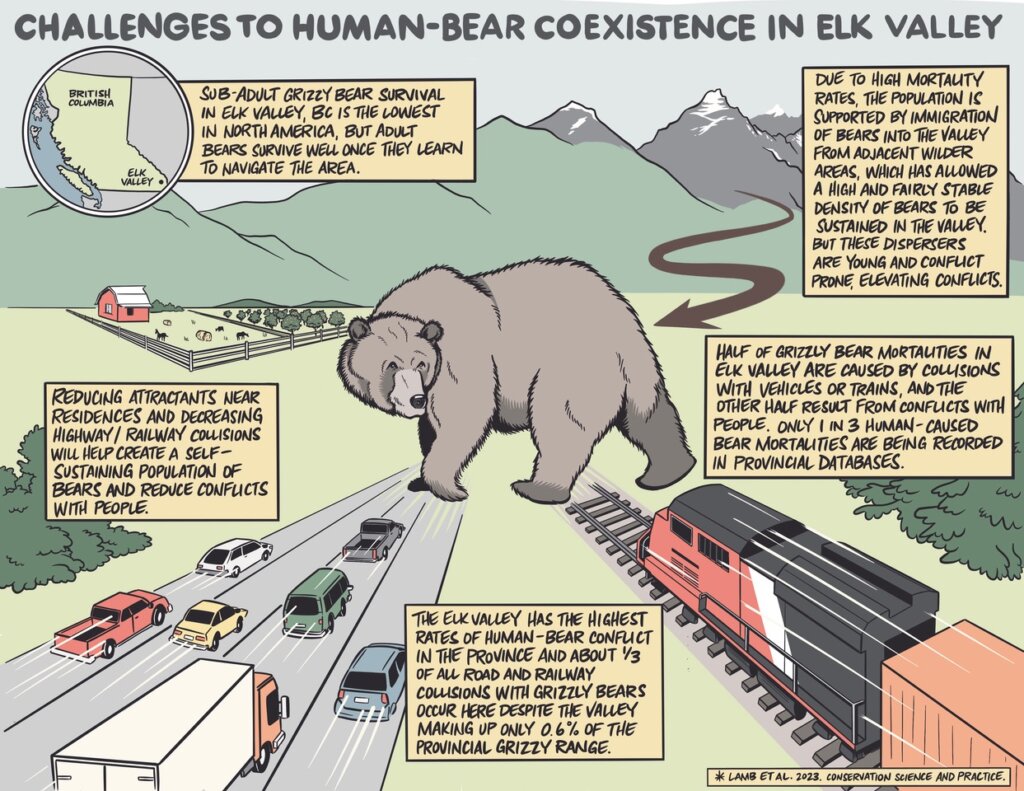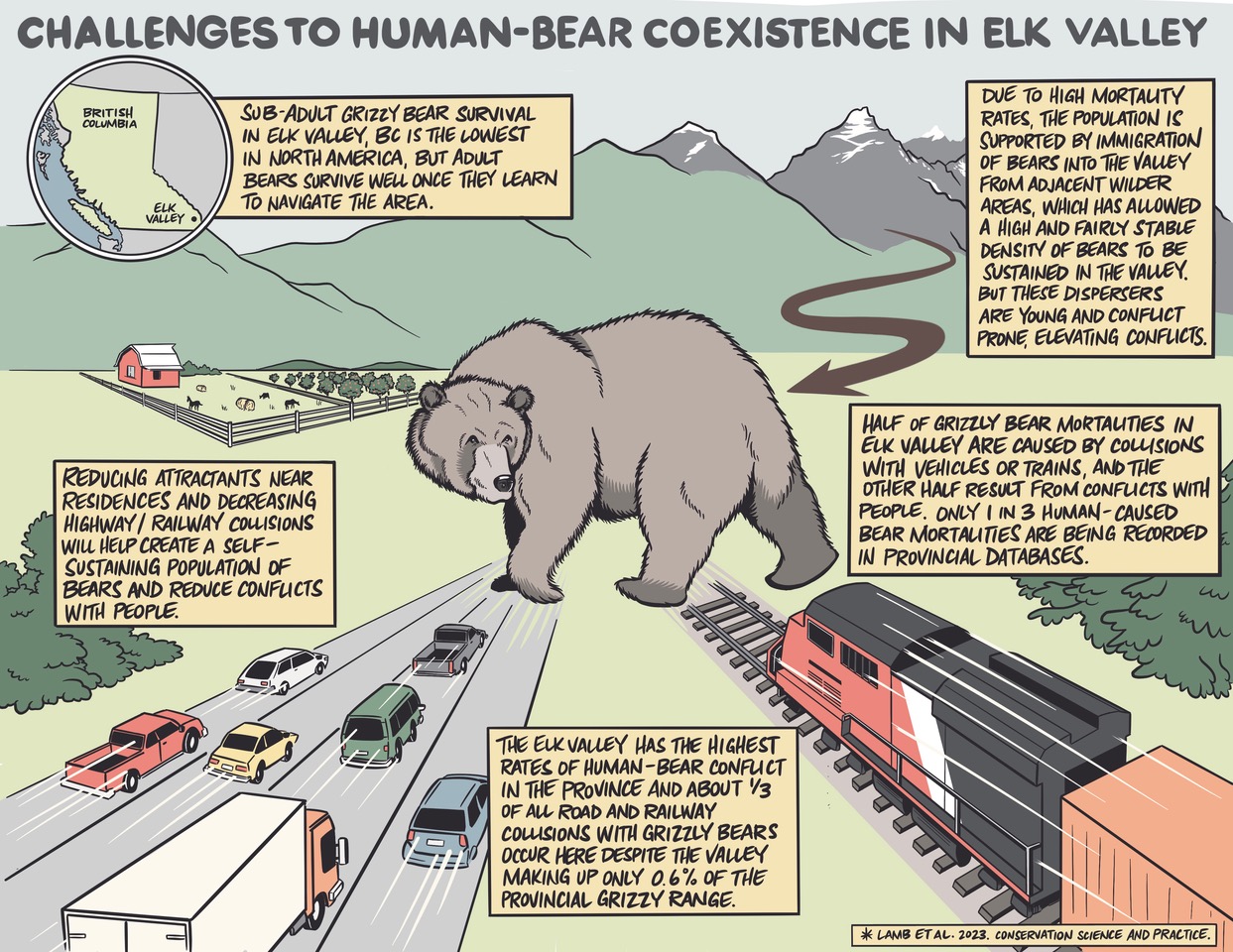A recent study by Clayton Lamb and colleagues provides an eye-opening look into the human–grizzly bear dynamic in British Columbia’s Elk Valley. Despite the abundance of grizzlies in the area, there are significant challenges to coexistence. This research illuminates that human-caused mortalities of grizzly bears are underreported, and many conflicts arise from human-bear interactions. In the last decade, the Elk Valley accounted for half of the grizzly-caused human injuries in the entire province. Notably, human infrastructure plays a significant role in bear fatalities, with half caused by collisions with vehicles and trains.

Surprisingly, many adult grizzlies live near human settlements without causing reported conflicts. These bears have adopted nocturnal behaviors, navigating railways and highways while avoiding human detection. However, younger, less experienced bears, especially those migrating from less populated areas, are more prone to daytime encounters, resulting in increased risks.
The study prompts an urgent question: does the current stability of grizzly bear numbers, marked by seasonal property damage and occasional confrontations, truly indicate coexistence? The answer is nuanced. Some areas in British Columbia have lost their grizzly populations due to conflicts. But in places like the Elk Valley, people and grizzlies coexist, albeit with challenges. This “middle ground” of coexistence is far from the ideal of a peaceful interaction between humans and bears.
However, hope shines through. Efforts are underway to improve the situation, from comprehensive bear awareness training to advanced technologies safeguarding both humans and bears. Tools like bear spray and electric fencing have proven effective in other regions. The province of British Columbia is also pioneering a collision reduction system that includes wildlife crossings and fencing, aiming to reduce fatal encounters on roads.
This crucial research underscores the need for more proactive measures to ensure the sustainable coexistence of humans and grizzlies. With the right combination of awareness, technology, and infrastructural adjustments, Elk Valley could set a precedent for human-bear coexistence for other regions to emulate.
Read the study here: https://conbio.onlinelibrary.wiley.com/doi/full/10.1111/csp2.13012
